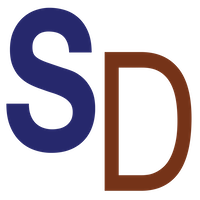A University of Florida researcher has developed a groundbreaking open-source computer program that uses artificial intelligence to analyze videos of patients with Parkinson’s disease and other movement disorders. The tool, called VisionMD, helps doctors more accurately monitor subtle motor changes, improving patient care and advancing clinical research.
Diego Guarin, Ph.D., an assistant professor of applied physiology and kinesiology in UF’s College of Health and Human Performance, created the software to address the potential risk of inconsistency and subjectivity in traditional clinical assessments.
“Over the years, we have shown through our research that video analysis of patients performing finger-tapping and other movements provides valuable information about how the disease is progressing and responding to medications or deep brain stimulation,” Guarin said. “However, clinicians don’t have the time and personnel to analyze their videos. To address this, we developed software that can deliver useful results with just a few clicks.”
Guarin, a member of the Fixel Institute for Neurological Disease at UF Health, worked closely with neurologists and other clinician-scientists from the Fixel Institute to refine the tool.
VisionMD analyzes standard videos — whether recorded on a smartphone, laptop or over Zoom — and automatically extracts precise motion metrics. The software runs entirely on local computers, ensuring data privacy.
“It’s not cloud-based, so there is no risk of data leaving the network. You can even unplug from the internet, and it still runs,” Guarin said. The tool is already in use globally, with researchers in Germany, Spain and Italy using it to analyze thousands of patient videos as they explore how computer vision can improve movement disorder care.
Florian Lange, a neurologist at University Hospital Würzburg, praised the software’s ability to provide consistent, objective measurements. He and Martin Reich, a neuroimaging professor at University of Würzburg, adapted VisionMD to help them optimize treatment for patients with tremor, particularly those using deep brain stimulation, or DBS, implants.
“A big challenge with many aspects of medicine today is how difficult it is to get objective data, especially with movement disorders like Parkinson’s disease or tremor,” Lange said from his office in Germany. “If the three of us watched the same video of a patient, we might rate the severity at three different levels. But the software gives us precise, unbiased data.”
By recording videos of patients at a variety of stimulator settings, the software identifies which DBS configuration offers the best symptom relief.
“There are millions of possible programming options, but this tool helps us narrow it down quickly and accurately,” Reich said.
As open-source software, the program is freely available to improve and customize.
The team is also working to expand the tool’s capabilities by adding more motor assessment tasks frequently used in clinical settings.
Early adopters say VisionMD’s accessibility and ease of use have the potential to transform movement disorder research and care.
“It takes only a few seconds to process each video,” Guarin said. “We are confident most clinicians will be able to use it, regardless of their technical expertise.”


